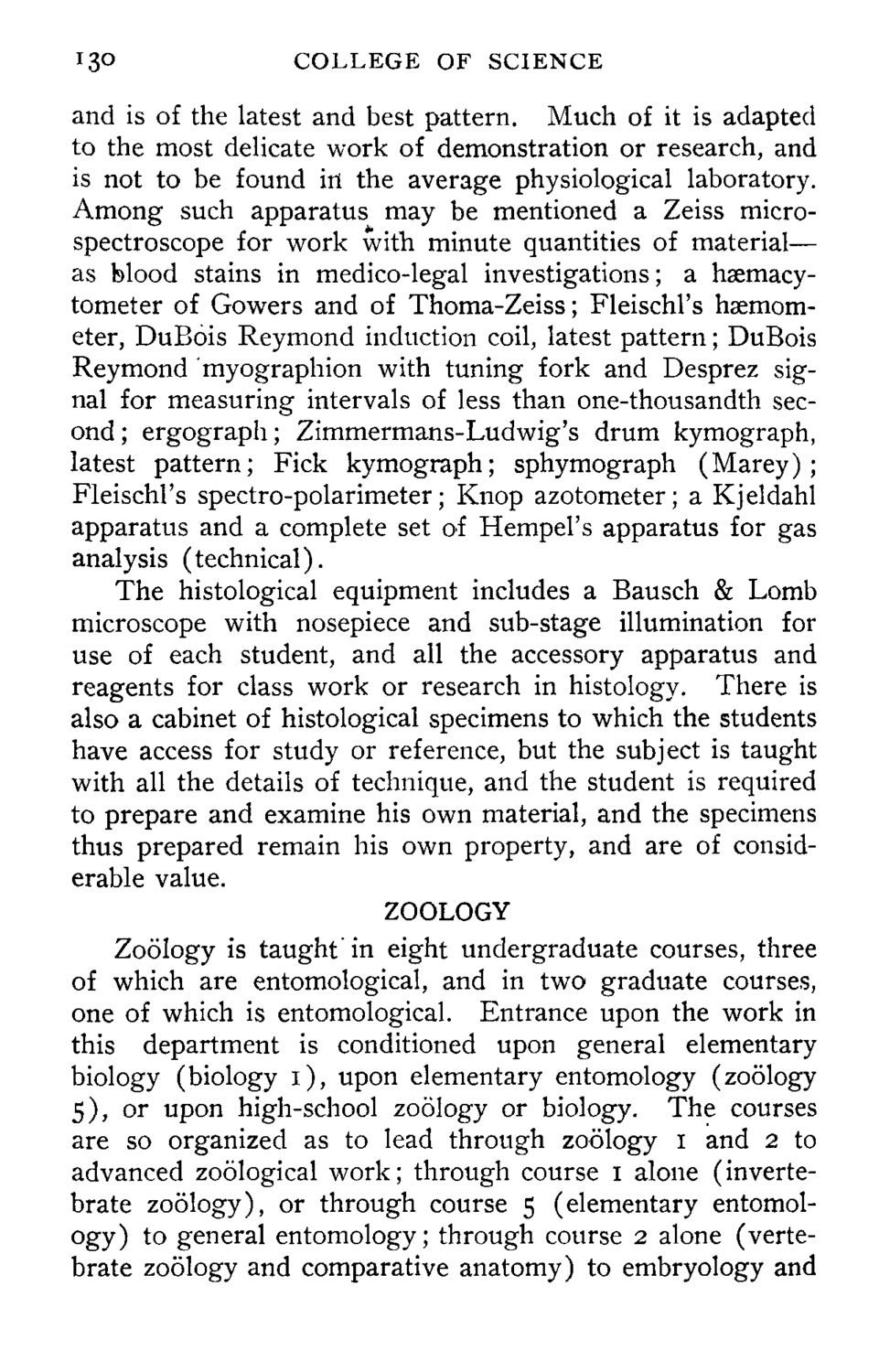| |
| |
Caption: Course Catalog - 1899-1900
This is a reduced-resolution page image for fast online browsing.

EXTRACTED TEXT FROM PAGE:
13° COLLEGE OF SCIENCE and is of the latest and best pattern. Much of it is adapted to the most delicate work of demonstration or research, and is not to be found in the average physiological laboratory. Among such apparatus may be mentioned a Zeiss microspectroscope for work with minute quantities of material— as blood stains in medico-legal investigations; a hsemacytometer of Gowers and of Thoma-Zeiss; Fleischl's haemometer, DuBois Reymond induction coil, latest pattern; DuBois Reymond myographion with tuning fork and Desprez signal for measuring intervals of less than one-thousandth second ; ergograph; Zimmermans-Ludwig's drum kymograph, latest pattern; Fick kymograph; sphymograph (Marey); Fleischl's spectro-polarimeter; Knop azotometer; a Kjeldahl apparatus and a complete set of Hempel's apparatus for gas analysis (technical). The histological equipment includes a Bausch & Lomb microscope with nosepiece and sub-stage illumination for use of each student, and all the accessory apparatus and reagents for class work or research in histology. There is also a cabinet of histological specimens to which the students have access for study or reference, but the subject is taught with all the details of technique, and the student is required to prepare and examine his own material, and the specimens thus prepared remain his own property, and are of considerable value. ZOOLOGY Zoology is taught in eight undergraduate courses, three of which are entomological, and in two graduate courses, one of which is entomological. Entrance upon the work in this department is conditioned upon general elementary biology (biology i ) , upon elementary entomology (zoology 5), or upon high-school zoology or biology. The courses are so organized as to lead through zoology I and 2 to advanced zoological work; through course i alone (invertebrate zoology), or through course 5 (elementary entomology) to general entomology; through course 2 alone (vertebrate zoology and comparative anatomy) to embryology and
| |